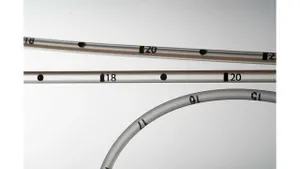Resin Price Report: Has Resin Pricing Hit Bottom?
In the wake of a 15% reduction in PE supply announced by one major producer, other suppliers are weighing their options.
August 31, 2022

It was a very interesting week for the resin markets, according to the PlasticsExchange: Activity was heightened compared with recent weeks but still shy of year-ago levels. Polyethylene (PE) and polypropylene (PP) pricing initially continued a cent lower, but then recovered as one major PE producer announced that it would implement a 15% worldwide reduction of its PE operating rates, writes the resin clearinghouse in its Market Update. (For more on this cutback, see “In other resin-related news” below.)
Other resin producers began to respond to this unprecedented announcement and the current over-supplied situation by indicating a reduction in their resin production, which could also include taking reactors offline ahead of scheduled maintenance or delaying startups, writes the PlasticsExchange. As word spread, more processors began to inquire for spot material, some still trying to snag resin at even lower prices. Most suppliers, however, took a step back, reluctant to chase low-ball bids in light of what could be market-bottoming activity. There was definitely a change in sentiment from very bearish to less bearish, but not quite neutral. Only time will tell if, indeed, a cycle-low has just been reached, writes the PlasticsExchange.
Some traders stepped in to procure well-priced material to stockpile for later sales, while noting that the resin overhang remains substantial and could still take some time before supply/demand fundamentals change noticeably. Upstream PE inventories are at record levels and PP stocks are also within striking distance as we head toward the heart of this year’s Gulf hurricane season, which so far has been very mild. Nonetheless, PlasticsExchange analysts believe a clear message was sent to industry that producers intend to correct the supply/demand imbalance, which would lead to rising resin prices in the future.
PE resin contract pricing ticks down
Although a nickel increase has been on the table for August PE contracts, it seems that a decrease of $0.05 to 0.06/lb will come through instead. Undeterred, one PE producer doubled down and announced a combined $0.10/ lb increase over the next two months, reports the PlasticsExchange. Many see this as a precaution in case there are major disruptions during the height of hurricane season. PP contracts could see a small net decline in August, as the $0.02/lb decrease in polymer-grade propylene (PGP) contracts ripples through, offset by a margin reduction that some are estimating at $0.03/lb.
Logistics issues remain a challenge, as well, but they should improve following BNSF Railways’ announcement that it was lifting its temporary permit embargo in California.
In the meantime, Houston warehouses remain stuffed to capacity, with some packaging facilities requiring rail permits to accept new railcars. Warehouses took it on the chin from mid-2020 through mid-2021, when greatly restricted supplies and high US resin prices limited fresh material for packaging and storage. They are currently making up for those lean times by hiking service fees substantially. In some cases, the fees exceed 100% of their historic levels.
Record-level PE resin inventory clogs warehouses
PE trading was somewhat more active the week of Aug. 22, as producers took initiatives to correct the burdensome oversupply and stop the price slide. While the concerted effort to curtail resin production will eventually tighten supplies, that will take time as there are still record-level upstream inventories clogging warehouses across Houston. Still, the overwhelming negative market tone has relaxed, according to the PlasticsExchange.
Supplies for most PE resin grades remained plentiful, although after one producer announced it would cut its worldwide resin production, domestic offers generally came without prices. Instead, sellers requested good, fair bids for consideration, a subtle but notable change in their attitudes. Very large volumes of PE seemed to be booked directly to overseas destinations; by the end of the week, export offers were only seen coming from traders with material already on hand.
PE contracts are bucking the August price increase and will instead see a $0.05 to 0.06/lb decrease. Resin buyers continued to enjoy their pricing power, picking away with relatively small orders as they believe prices, in the face of unenthusiastic consumer demand, can still move lower.
Persistent demand for Prime PP resin truckloads
PP activity picked up, but completed volumes still disappointed even as some well-priced off-grade railcars transacted. Demand for Prime truckloads for immediate shipment remained a high priority, though readily available supply was scarce and commanded a sizable premium, which was only sometimes paid by frustrated buyers.
While Prime railcar availability thinned out as the end of the month approached, a relatively heavy flow of off-grade railcars continued. This mix could be indicative of reduced production to help offset the supply overhang, said the PlasticsExchange. Processors have been drawing down their on-hand inventories, as many still complain about weak throughput demand. Still wary of last year’s storm-related shortages, some processors have begun to buy a little extra resin as a buffer against the chance of new disruptions as the heart of hurricane season nears. In the meantime, while not officially settled, August PP contracts are estimated to settle down a net $0.01/lb, following the two-cent increase in the August PGP contract, offset by some PP margin contraction, estimated at $0.03/lb.
Read the full Market Update, including news about PGP pricing and energy futures, on the PlasticsExchange website.
In other resin-related news
Dow Chemical cuts PE production
Dow Chemical is cutting global polyethylene (PE) production rates by 15% amid logistics logjams in the United States and Europe, S&P Global Commodity Insights reported on Aug. 24 based on a letter that Dow sent to customers that was seen by the business intelligence firm.
"Given continued global logistics constraints, including port and rail congestion in the US Gulf Coast and dynamic conditions in Europe, Dow is reducing operating rates across our polyethylene assets, resulting in temporarily lowering 15% of our global polyethylene nameplate capacity," the letter, dated Aug. 24, is reported to have said. The letter also said Dow's cutbacks were expected to help balance high inventories at key global ports and in packaging warehouses, particularly in the US Gulf Coast during August and September, which typically are the months during which strong hurricanes can form, reported S&P Global Commodity Insights.
US polymer producers have been expected to reduce rates, with global resin demand softening on top of logistics clogs that emerged in late 2021 that have lingered through early-to-mid 2022.
Dow is the second-largest global PE producer, with a total of 9.8 million mt/year of capacity, according to Platts petrochemical analytics cited by S&P Global Commodity Insights. ExxonMobil is the top PE producer, with 10.6 million mt/year of capacity.
You May Also Like


